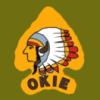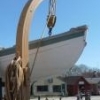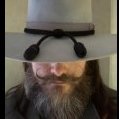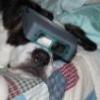Supplies of the Ship Modeler's Handbook are running out. Get your copy NOW before they are gone! Click on photo to order.
×
-
Posts
666 -
Joined
-
Last visited
Reputation Activity
-
 Salty Sea Dog reacted to geoff in The Kit-Basher's Guide To The Galaxy
Salty Sea Dog reacted to geoff in The Kit-Basher's Guide To The Galaxy
would a reject contact lens do the same job?
-
 Salty Sea Dog reacted to CaptainSteve in The Kit-Basher's Guide To The Galaxy
Salty Sea Dog reacted to CaptainSteve in The Kit-Basher's Guide To The Galaxy
Arrr ...
Thank Ye, Buck !!
Methinks your compass will be making an appearance in a few upcoming Bounty Launch builds ...
-
 Salty Sea Dog got a reaction from barryww in The Kit-Basher's Guide To The Galaxy
Salty Sea Dog got a reaction from barryww in The Kit-Basher's Guide To The Galaxy
CLEAR PLASTIC JARS OR BOTTLES, BRASS TUBING & STUBBORNNESS
The Captain invited me to his table to share how I recently made a compass box for my whaleboat. One of the pieces needed was a 'glass' lens for the compass. I ended up using a piece of clear plastic cut from the side of a plastic jar. The curvature of the jar adds a bit of magnification to the lens which makes a nice effect.
It proved tougher than I expected to make a little lens and I ended up with a few rejects.
Here's what I learned from my failed attempts:
1) Do not shape it with sandpaper or a double-cut file. The thicker jar plastic actually seems to be a 3-layer lamination, and I'm guessing the heat from coarser shaping methods causes a de-lamination that clouds up the edge of the lens. It actually swells up too. In hindsight, the really flimsy clear water bottles are probably a single layer and may not have these problems. However, it may be the thickness of the jars that help create the little bit of magnification. I don't know if all of the thicker plastic containers are laminations. More testing is needed!
2) When using a single cut file, don't keep filing for long in the same place or the heat will start clouding the plastic.
3) Use scissors to cut the plastic as close to the final shape as possible so you don't have to file very much. Don't try to cut tight curves with scissors though or it will cloud up. Cut straight litle segments instead of curves, and then file to a smooth curve.
4) It's really hard to file a perfect circle. I wasn't able to.
The compass box itself was made with thin pieces of hardwood because I was concerned the tiny box joint fingers would snap off if I used too soft of a wood. This is 1mm thick purpleheart. I used guitar nut slotting files and progressively widened the little slots between fingers from .010" up to .032" wide. These files cut a rounded bottom (for guitar strings) so I squared up the corners of the .032" slots with the skinny .010" file tilted to get into the corners. The joints were then fine tuned for fit with 320 grit sandpaper. The sides of the box were labeled for orientation since the joints at each corner were unique. It's a little tedious but it looks cool! If I were going to do a lot of this sort of thing, I think that I would jig up a Dremel flex shaft with a cut-off wheel under a little table and cut the pieces just as you would at 1:1 on a table saw with a sled.
Here's the pieces ready to assemble. The housing is a short piece of brass tubing. The rose compass was from Google Images, and I found that if I put the image into a Word document, I could shrink it way down with decent resolution by grabbing the corner of the image and making it tiny on the document itself before printing. I shaped a piece of cedar to almost fit inside the tubing and then pressed it in and the tubing shaved it to shape. If you happen to have a dowel of the right size, just use that. Note that the end of the cedar that the compass rose is attached to is intentionally at a slight angle. I was after the effect of the compass tilting on its mounting giblets....mounting gimlets?...mounting gimbals? Anyway, whatever those mounting thingies are called that alows a compass to self-level.
The assembled compass box:
Best wishes and Happy Nw Year!
EDIT TO ADD: This compass box is 1:25th scale and is 7mm x 7mm x 5mm tall with a compass (brass tubing o.d.) diameter of about 3/16" overall.
Those of you building the Bounty Launch are at 1:16 or 3/4" scale. The compass box sizing is from my New Bedford Whaleboat plans, which are also 3/4" scale, so your compass box should be a huge 7/16" x 7/16" x 5/16" tall with a compass diameter about 5/16" overall.
-
 Salty Sea Dog got a reaction from Landlocked123 in The Kit-Basher's Guide To The Galaxy
Salty Sea Dog got a reaction from Landlocked123 in The Kit-Basher's Guide To The Galaxy
CLEAR PLASTIC JARS OR BOTTLES, BRASS TUBING & STUBBORNNESS
The Captain invited me to his table to share how I recently made a compass box for my whaleboat. One of the pieces needed was a 'glass' lens for the compass. I ended up using a piece of clear plastic cut from the side of a plastic jar. The curvature of the jar adds a bit of magnification to the lens which makes a nice effect.
It proved tougher than I expected to make a little lens and I ended up with a few rejects.
Here's what I learned from my failed attempts:
1) Do not shape it with sandpaper or a double-cut file. The thicker jar plastic actually seems to be a 3-layer lamination, and I'm guessing the heat from coarser shaping methods causes a de-lamination that clouds up the edge of the lens. It actually swells up too. In hindsight, the really flimsy clear water bottles are probably a single layer and may not have these problems. However, it may be the thickness of the jars that help create the little bit of magnification. I don't know if all of the thicker plastic containers are laminations. More testing is needed!
2) When using a single cut file, don't keep filing for long in the same place or the heat will start clouding the plastic.
3) Use scissors to cut the plastic as close to the final shape as possible so you don't have to file very much. Don't try to cut tight curves with scissors though or it will cloud up. Cut straight litle segments instead of curves, and then file to a smooth curve.
4) It's really hard to file a perfect circle. I wasn't able to.
The compass box itself was made with thin pieces of hardwood because I was concerned the tiny box joint fingers would snap off if I used too soft of a wood. This is 1mm thick purpleheart. I used guitar nut slotting files and progressively widened the little slots between fingers from .010" up to .032" wide. These files cut a rounded bottom (for guitar strings) so I squared up the corners of the .032" slots with the skinny .010" file tilted to get into the corners. The joints were then fine tuned for fit with 320 grit sandpaper. The sides of the box were labeled for orientation since the joints at each corner were unique. It's a little tedious but it looks cool! If I were going to do a lot of this sort of thing, I think that I would jig up a Dremel flex shaft with a cut-off wheel under a little table and cut the pieces just as you would at 1:1 on a table saw with a sled.
Here's the pieces ready to assemble. The housing is a short piece of brass tubing. The rose compass was from Google Images, and I found that if I put the image into a Word document, I could shrink it way down with decent resolution by grabbing the corner of the image and making it tiny on the document itself before printing. I shaped a piece of cedar to almost fit inside the tubing and then pressed it in and the tubing shaved it to shape. If you happen to have a dowel of the right size, just use that. Note that the end of the cedar that the compass rose is attached to is intentionally at a slight angle. I was after the effect of the compass tilting on its mounting giblets....mounting gimlets?...mounting gimbals? Anyway, whatever those mounting thingies are called that alows a compass to self-level.
The assembled compass box:
Best wishes and Happy Nw Year!
EDIT TO ADD: This compass box is 1:25th scale and is 7mm x 7mm x 5mm tall with a compass (brass tubing o.d.) diameter of about 3/16" overall.
Those of you building the Bounty Launch are at 1:16 or 3/4" scale. The compass box sizing is from my New Bedford Whaleboat plans, which are also 3/4" scale, so your compass box should be a huge 7/16" x 7/16" x 5/16" tall with a compass diameter about 5/16" overall.
-
 Salty Sea Dog got a reaction from Cap'n Rat Fink in Charles W Morgan Whaleboat by Salty Sea Dog - Artesania Latina - Scale 1:25 - POF - first wooden boat build - SMALL
Salty Sea Dog got a reaction from Cap'n Rat Fink in Charles W Morgan Whaleboat by Salty Sea Dog - Artesania Latina - Scale 1:25 - POF - first wooden boat build - SMALL
We have 4 sides to the compass box now.
-
 Salty Sea Dog got a reaction from Cap'n Rat Fink in Charles W Morgan Whaleboat by Salty Sea Dog - Artesania Latina - Scale 1:25 - POF - first wooden boat build - SMALL
Salty Sea Dog got a reaction from Cap'n Rat Fink in Charles W Morgan Whaleboat by Salty Sea Dog - Artesania Latina - Scale 1:25 - POF - first wooden boat build - SMALL
Hello eveyone!
I worked on the compass box today and was trying to make a "glass" lens for it. Once again, I found use for a plastic jar (this time one that sunflower seeds had come in). The curvature of the jar adds to the look and actually appears to maginify a little. Making the lens proved really difficult and resulted in plenty of failed attempts.
Here's what I learned when shaping the plastic from jars.
1) Do not shape it with sandpaper or a double-cut file. The plastic actually seems to be a 3-layer lamination and I'm guessing the heat from coarser shaping methods causes a de-lamination that clouds up the edge of the lens. It actually swells up too.
2) When using a single cut file, don't file too much in the same place for the same reason.
3) Use scissors to cut the plastic as close to the final shape as possible so you don't have to file very much. Don't try to cut curves with scissors or it will cloud up. Cut straight litle segments instead of curves, and then file to a smooth curve.
4) It's really hard to file a perfect circle. I wasn't able to.
Here's the pieces ready to assemble. The housing is a short piece of brass tubing. The rose compass was from Google Images, and I found that if I put the image into a Word document, I could shrink it way down with decent resolution by grabbing the corner of the image and making it tiny on the document before printing. I shaped a piece of cedar to almost fit inside the tubing and then pressed it in and the tubing shaved it to shape. Note that the end of the cedar that the compass rose is attached to is at a slight angle. I was after the effect of the compass tilting on its mouting giblets....mounting gimlets?...mounting gimbals? Anyway, whatever those mounting thingies are that alows a compass to self-level.
The finished compass box.
Best wishes,
-
 Salty Sea Dog got a reaction from Cap'n Rat Fink in Charles W Morgan Whaleboat by Salty Sea Dog - Artesania Latina - Scale 1:25 - POF - first wooden boat build - SMALL
Salty Sea Dog got a reaction from Cap'n Rat Fink in Charles W Morgan Whaleboat by Salty Sea Dog - Artesania Latina - Scale 1:25 - POF - first wooden boat build - SMALL
I think another bucket might fit on this penny...
-
 Salty Sea Dog reacted to augie in Charles W Morgan Whaleboat by Salty Sea Dog - Artesania Latina - Scale 1:25 - POF - first wooden boat build - SMALL
Salty Sea Dog reacted to augie in Charles W Morgan Whaleboat by Salty Sea Dog - Artesania Latina - Scale 1:25 - POF - first wooden boat build - SMALL
Very, very nice. And well worth the effort.
Now, when can we expect the details regarding the calibration of the compass?
-
 Salty Sea Dog reacted to CaptainSteve in Charles W Morgan Whaleboat by Salty Sea Dog - Artesania Latina - Scale 1:25 - POF - first wooden boat build - SMALL
Salty Sea Dog reacted to CaptainSteve in Charles W Morgan Whaleboat by Salty Sea Dog - Artesania Latina - Scale 1:25 - POF - first wooden boat build - SMALL
Nice job there, Buck. That just looks so realistic !!
I reckon that's another one of your ideas that I'm going to have to shamelessly copy.
-
 Salty Sea Dog got a reaction from JesseLee in Charles W Morgan Whaleboat by Salty Sea Dog - Artesania Latina - Scale 1:25 - POF - first wooden boat build - SMALL
Salty Sea Dog got a reaction from JesseLee in Charles W Morgan Whaleboat by Salty Sea Dog - Artesania Latina - Scale 1:25 - POF - first wooden boat build - SMALL
I think another bucket might fit on this penny...
-
 Salty Sea Dog got a reaction from GuntherMT in Charles W Morgan Whaleboat by Salty Sea Dog - Artesania Latina - Scale 1:25 - POF - first wooden boat build - SMALL
Salty Sea Dog got a reaction from GuntherMT in Charles W Morgan Whaleboat by Salty Sea Dog - Artesania Latina - Scale 1:25 - POF - first wooden boat build - SMALL
I think another bucket might fit on this penny...
-
 Salty Sea Dog got a reaction from Geoff Matson in The Kit-Basher's Guide To The Galaxy
Salty Sea Dog got a reaction from Geoff Matson in The Kit-Basher's Guide To The Galaxy
CLEAR PLASTIC JARS OR BOTTLES, BRASS TUBING & STUBBORNNESS
The Captain invited me to his table to share how I recently made a compass box for my whaleboat. One of the pieces needed was a 'glass' lens for the compass. I ended up using a piece of clear plastic cut from the side of a plastic jar. The curvature of the jar adds a bit of magnification to the lens which makes a nice effect.
It proved tougher than I expected to make a little lens and I ended up with a few rejects.
Here's what I learned from my failed attempts:
1) Do not shape it with sandpaper or a double-cut file. The thicker jar plastic actually seems to be a 3-layer lamination, and I'm guessing the heat from coarser shaping methods causes a de-lamination that clouds up the edge of the lens. It actually swells up too. In hindsight, the really flimsy clear water bottles are probably a single layer and may not have these problems. However, it may be the thickness of the jars that help create the little bit of magnification. I don't know if all of the thicker plastic containers are laminations. More testing is needed!
2) When using a single cut file, don't keep filing for long in the same place or the heat will start clouding the plastic.
3) Use scissors to cut the plastic as close to the final shape as possible so you don't have to file very much. Don't try to cut tight curves with scissors though or it will cloud up. Cut straight litle segments instead of curves, and then file to a smooth curve.
4) It's really hard to file a perfect circle. I wasn't able to.
The compass box itself was made with thin pieces of hardwood because I was concerned the tiny box joint fingers would snap off if I used too soft of a wood. This is 1mm thick purpleheart. I used guitar nut slotting files and progressively widened the little slots between fingers from .010" up to .032" wide. These files cut a rounded bottom (for guitar strings) so I squared up the corners of the .032" slots with the skinny .010" file tilted to get into the corners. The joints were then fine tuned for fit with 320 grit sandpaper. The sides of the box were labeled for orientation since the joints at each corner were unique. It's a little tedious but it looks cool! If I were going to do a lot of this sort of thing, I think that I would jig up a Dremel flex shaft with a cut-off wheel under a little table and cut the pieces just as you would at 1:1 on a table saw with a sled.
Here's the pieces ready to assemble. The housing is a short piece of brass tubing. The rose compass was from Google Images, and I found that if I put the image into a Word document, I could shrink it way down with decent resolution by grabbing the corner of the image and making it tiny on the document itself before printing. I shaped a piece of cedar to almost fit inside the tubing and then pressed it in and the tubing shaved it to shape. If you happen to have a dowel of the right size, just use that. Note that the end of the cedar that the compass rose is attached to is intentionally at a slight angle. I was after the effect of the compass tilting on its mounting giblets....mounting gimlets?...mounting gimbals? Anyway, whatever those mounting thingies are called that alows a compass to self-level.
The assembled compass box:
Best wishes and Happy Nw Year!
EDIT TO ADD: This compass box is 1:25th scale and is 7mm x 7mm x 5mm tall with a compass (brass tubing o.d.) diameter of about 3/16" overall.
Those of you building the Bounty Launch are at 1:16 or 3/4" scale. The compass box sizing is from my New Bedford Whaleboat plans, which are also 3/4" scale, so your compass box should be a huge 7/16" x 7/16" x 5/16" tall with a compass diameter about 5/16" overall.
-
 Salty Sea Dog got a reaction from mtaylor in Charles W Morgan Whaleboat by Salty Sea Dog - Artesania Latina - Scale 1:25 - POF - first wooden boat build - SMALL
Salty Sea Dog got a reaction from mtaylor in Charles W Morgan Whaleboat by Salty Sea Dog - Artesania Latina - Scale 1:25 - POF - first wooden boat build - SMALL
I think another bucket might fit on this penny...
-
 Salty Sea Dog got a reaction from Landlubber Mike in The Kit-Basher's Guide To The Galaxy
Salty Sea Dog got a reaction from Landlubber Mike in The Kit-Basher's Guide To The Galaxy
CLEAR PLASTIC JARS OR BOTTLES, BRASS TUBING & STUBBORNNESS
The Captain invited me to his table to share how I recently made a compass box for my whaleboat. One of the pieces needed was a 'glass' lens for the compass. I ended up using a piece of clear plastic cut from the side of a plastic jar. The curvature of the jar adds a bit of magnification to the lens which makes a nice effect.
It proved tougher than I expected to make a little lens and I ended up with a few rejects.
Here's what I learned from my failed attempts:
1) Do not shape it with sandpaper or a double-cut file. The thicker jar plastic actually seems to be a 3-layer lamination, and I'm guessing the heat from coarser shaping methods causes a de-lamination that clouds up the edge of the lens. It actually swells up too. In hindsight, the really flimsy clear water bottles are probably a single layer and may not have these problems. However, it may be the thickness of the jars that help create the little bit of magnification. I don't know if all of the thicker plastic containers are laminations. More testing is needed!
2) When using a single cut file, don't keep filing for long in the same place or the heat will start clouding the plastic.
3) Use scissors to cut the plastic as close to the final shape as possible so you don't have to file very much. Don't try to cut tight curves with scissors though or it will cloud up. Cut straight litle segments instead of curves, and then file to a smooth curve.
4) It's really hard to file a perfect circle. I wasn't able to.
The compass box itself was made with thin pieces of hardwood because I was concerned the tiny box joint fingers would snap off if I used too soft of a wood. This is 1mm thick purpleheart. I used guitar nut slotting files and progressively widened the little slots between fingers from .010" up to .032" wide. These files cut a rounded bottom (for guitar strings) so I squared up the corners of the .032" slots with the skinny .010" file tilted to get into the corners. The joints were then fine tuned for fit with 320 grit sandpaper. The sides of the box were labeled for orientation since the joints at each corner were unique. It's a little tedious but it looks cool! If I were going to do a lot of this sort of thing, I think that I would jig up a Dremel flex shaft with a cut-off wheel under a little table and cut the pieces just as you would at 1:1 on a table saw with a sled.
Here's the pieces ready to assemble. The housing is a short piece of brass tubing. The rose compass was from Google Images, and I found that if I put the image into a Word document, I could shrink it way down with decent resolution by grabbing the corner of the image and making it tiny on the document itself before printing. I shaped a piece of cedar to almost fit inside the tubing and then pressed it in and the tubing shaved it to shape. If you happen to have a dowel of the right size, just use that. Note that the end of the cedar that the compass rose is attached to is intentionally at a slight angle. I was after the effect of the compass tilting on its mounting giblets....mounting gimlets?...mounting gimbals? Anyway, whatever those mounting thingies are called that alows a compass to self-level.
The assembled compass box:
Best wishes and Happy Nw Year!
EDIT TO ADD: This compass box is 1:25th scale and is 7mm x 7mm x 5mm tall with a compass (brass tubing o.d.) diameter of about 3/16" overall.
Those of you building the Bounty Launch are at 1:16 or 3/4" scale. The compass box sizing is from my New Bedford Whaleboat plans, which are also 3/4" scale, so your compass box should be a huge 7/16" x 7/16" x 5/16" tall with a compass diameter about 5/16" overall.
-
 Salty Sea Dog got a reaction from Ponto in The Kit-Basher's Guide To The Galaxy
Salty Sea Dog got a reaction from Ponto in The Kit-Basher's Guide To The Galaxy
CLEAR PLASTIC JARS OR BOTTLES, BRASS TUBING & STUBBORNNESS
The Captain invited me to his table to share how I recently made a compass box for my whaleboat. One of the pieces needed was a 'glass' lens for the compass. I ended up using a piece of clear plastic cut from the side of a plastic jar. The curvature of the jar adds a bit of magnification to the lens which makes a nice effect.
It proved tougher than I expected to make a little lens and I ended up with a few rejects.
Here's what I learned from my failed attempts:
1) Do not shape it with sandpaper or a double-cut file. The thicker jar plastic actually seems to be a 3-layer lamination, and I'm guessing the heat from coarser shaping methods causes a de-lamination that clouds up the edge of the lens. It actually swells up too. In hindsight, the really flimsy clear water bottles are probably a single layer and may not have these problems. However, it may be the thickness of the jars that help create the little bit of magnification. I don't know if all of the thicker plastic containers are laminations. More testing is needed!
2) When using a single cut file, don't keep filing for long in the same place or the heat will start clouding the plastic.
3) Use scissors to cut the plastic as close to the final shape as possible so you don't have to file very much. Don't try to cut tight curves with scissors though or it will cloud up. Cut straight litle segments instead of curves, and then file to a smooth curve.
4) It's really hard to file a perfect circle. I wasn't able to.
The compass box itself was made with thin pieces of hardwood because I was concerned the tiny box joint fingers would snap off if I used too soft of a wood. This is 1mm thick purpleheart. I used guitar nut slotting files and progressively widened the little slots between fingers from .010" up to .032" wide. These files cut a rounded bottom (for guitar strings) so I squared up the corners of the .032" slots with the skinny .010" file tilted to get into the corners. The joints were then fine tuned for fit with 320 grit sandpaper. The sides of the box were labeled for orientation since the joints at each corner were unique. It's a little tedious but it looks cool! If I were going to do a lot of this sort of thing, I think that I would jig up a Dremel flex shaft with a cut-off wheel under a little table and cut the pieces just as you would at 1:1 on a table saw with a sled.
Here's the pieces ready to assemble. The housing is a short piece of brass tubing. The rose compass was from Google Images, and I found that if I put the image into a Word document, I could shrink it way down with decent resolution by grabbing the corner of the image and making it tiny on the document itself before printing. I shaped a piece of cedar to almost fit inside the tubing and then pressed it in and the tubing shaved it to shape. If you happen to have a dowel of the right size, just use that. Note that the end of the cedar that the compass rose is attached to is intentionally at a slight angle. I was after the effect of the compass tilting on its mounting giblets....mounting gimlets?...mounting gimbals? Anyway, whatever those mounting thingies are called that alows a compass to self-level.
The assembled compass box:
Best wishes and Happy Nw Year!
EDIT TO ADD: This compass box is 1:25th scale and is 7mm x 7mm x 5mm tall with a compass (brass tubing o.d.) diameter of about 3/16" overall.
Those of you building the Bounty Launch are at 1:16 or 3/4" scale. The compass box sizing is from my New Bedford Whaleboat plans, which are also 3/4" scale, so your compass box should be a huge 7/16" x 7/16" x 5/16" tall with a compass diameter about 5/16" overall.
-
 Salty Sea Dog reacted to CaptainSteve in Bounty Launch by CaptainSteve - FINISHED - Model Shipways - 1:16 Scale - SMALL
Salty Sea Dog reacted to CaptainSteve in Bounty Launch by CaptainSteve - FINISHED - Model Shipways - 1:16 Scale - SMALL
This past week didst see our Hero complete a task which hath weighed most heavily, indeedeth, upon his mind.
Whence last we did leaveth him, CaptainSteve had finished the sewing of his sails and was deep in contemplation.
“Specifically, I be most concerned with matters of colouration,” he didst try to explain, as if that never happens.
But firstly, there be the matter o’ what wouldst be a-holding his sails unto the Sticks.
“Err, I be meanin’, the Spars,” he didst quickly interject.
And the answer to this question was to be found in CaptainSteve's vast collection of beads, bits, pieces and left-over kit parts.
These actually be the very same bead what 'as been used previously fer the cutlass pommels. To fit the beads, CaptainSteve didst taketh up his knife and hacketh gaping (2mm) holes into his sails.
"The beads be coated in two-part epoxy glue 'afore being set into place ..." he said.
But, this didst leaveth a glue stain ...
... which didst only help to confirm my idea !!!
And, hence, a guinea pig was required, soeth that a test couldst be undertaken:
"I doth assure ye," CaptainSteve muttered, "There was MANY tests!!"
Now, many of you shalt be pleased to learn that CaptainSteve hath since forgone earlier plans to rend a mighty rip unto his sails. For, since completing some readings into the whole Mutiny saga (and publishing his learnings here), Our Hero hath gone cold on the idea.
“I’ve gone cold uponeth that whole idea,” he did sayeth. “Indeedeth, despite numerous references to the fiercest of weather, there be nought in Bligh’s log that doest give any indication as to sail damage throughout their journey.”
Indeed, verily, though it was a most goodly thought, even the patches will no longer be making an appearance.
“Now, beforeth I doth move forth with the pictures,” Our Hero was heard to say, “I shouldst like ye to consider that everything in the foreground o' this next picture didst be used to achieveth the final look.”
“As to the look upon which I was to eventually settle,” CaptainSteve explained. “Twice were I to findeth in Bligh’s scribblings, notes which didst help maketh up my mind fer me ..."
"Firstly, rains didst cometh down almost constantly throughout the journey, making the Loyalists cold, wet and miserable for a large portion of the time.
“And, secondly,” he didst continue, “there were a LOT of sea-birds about !!”
This, of course, doth raiseth that old, philosophical conundrum:
'If a potato chip doth fall-eth upon a beach, and there be-eth no sea-gull to swoop upon it, then didst it indeed fall-eth ??'
(... sound of crickets chirping away in the background ... )
"But, I doest digress ..." stated CaptainSteve, perhaps somewhat unnecessarily.
For, verily, this was all done with dry-brushing ...
Except for the bird-poop ...
“Strictly in order to maintaineth authenticity (and texture),“ Our Hero added, most helpfully, “didst I applieth that wet.”
“I be a-figurin’,” CaptainSteve didst begineth to wind this whole thing up-eth, “that gannet/booby/noddy poop wouldst be-eth of a thicker viscosity than that of leeching, rust-stained rain-water a-running down me sails.”
And one final photograph showing them laid out, this time upon the plans.
“At a short distance, they actually be lookin’ quite fine, methinks,” he didst concludeth.
Happy New Year to each an' every one o' you !!!
-
 Salty Sea Dog reacted to NAZGÛL in Wasan 1628 by Nazgul - FINISHED - Billing Boats Vasa 1:75
Salty Sea Dog reacted to NAZGÛL in Wasan 1628 by Nazgul - FINISHED - Billing Boats Vasa 1:75
Thanks Buck! I used straws from an old brush to get it in scale. CA glue it to the stick and then trim and it to shape. I did two tests before I managed to get it right.
And yes, my fingers where hairy afterward.
Here is a part of Eendracht by Willem Van de Velde showing two svablar and the look I tried to make:
/Matti
-
 Salty Sea Dog got a reaction from NAZGÛL in Wasan 1628 by Nazgul - FINISHED - Billing Boats Vasa 1:75
Salty Sea Dog got a reaction from NAZGÛL in Wasan 1628 by Nazgul - FINISHED - Billing Boats Vasa 1:75
Nice! It really doesn't get much better than this. What did you use for the broom straw?
-
 Salty Sea Dog reacted to SJSoane in Skipjack by michael mott - 1/8th scale - SMALL - 19 foot open launch
Salty Sea Dog reacted to SJSoane in Skipjack by michael mott - 1/8th scale - SMALL - 19 foot open launch
Michael,
I am at a loss for words to describe how incredible this engine building is looking. Your metal skills are beyond my comprehension. It sounds like you had some great teachers, but I have no doubt you were an exceptional pupil!
Mark
-
 Salty Sea Dog reacted to michael mott in Skipjack by michael mott - 1/8th scale - SMALL - 19 foot open launch
Salty Sea Dog reacted to michael mott in Skipjack by michael mott - 1/8th scale - SMALL - 19 foot open launch
Thanks for all the likes and encouraging comments.
I had to make another cutter to make the recesses in the main flanges
I have already drilled the holes to accept the camshaft bearings they are larger because I need to be able to clear the raised cams.
An overall shot of the progress to date.
A close up of the new cutter, I needed a long reach with a small diameter cutting edge to fit next to the body of the case. it is hardened drill rod the diameter at the cutting face is .086" The bolt holes are .060 and the case it tapped ready for the 0x80 bolts.
Michael
-
 Salty Sea Dog reacted to michael mott in Skipjack by michael mott - 1/8th scale - SMALL - 19 foot open launch
Salty Sea Dog reacted to michael mott in Skipjack by michael mott - 1/8th scale - SMALL - 19 foot open launch
After doing a few experiments with the valve stem springs and keeper, I have increased the diameter of the valve-stem to .060" inches leaving the narrow section for the keeper at .046"
This was one of the early tests using the .046 stem the spring is .078 in diameter and the wire is .011. the keeper was a bit fiddly. I can safely increase the stem diameter and still maintain the .078 diameter springs the length of the springs are ..259" presently I am learning how to wind them so that there is a double coil at each end with the wider spaced turns in between. I have found that it is better to make them this way rather than winding a length then stretching it out to form the compression spring.
The crank case is progressing well at this time also. there is a fair bit of hand filing to finish up the corners because I do not have the requisite end mills to do all this work on the milling machine.
this next picture shows the flats on the sides of the liners slipped through the top of the upper part of the crankcase.
that's it for now.
Michael
-
 Salty Sea Dog reacted to michael mott in Skipjack by michael mott - 1/8th scale - SMALL - 19 foot open launch
Salty Sea Dog reacted to michael mott in Skipjack by michael mott - 1/8th scale - SMALL - 19 foot open launch
Si, thanks for the kind words, Denis I like your new avatar, The song "Imagine" is my favourite song of the last century.
I started working on the crankcase it is cut from a block of brass that a friend gave me, it was given to him by somebody who melted down a bunch of odd bits of brass. it is hard and fine grained. The block was about 5 inches long and 3 wide and about 1 3/8 thick looked like it was cast in a mini bread pan. The brass cut nicely in the cut off saw.
This is the progress on the flats that will slot unto the crankcase hole. this will ensure that the sleeves remain seated, this is because I am not familiar with the differential expansion of the brass and stainless when the engine warms up. I doubt that there will be any problems so this is just to keep my mind at ease.
Michael
-
 Salty Sea Dog reacted to michael mott in Skipjack by michael mott - 1/8th scale - SMALL - 19 foot open launch
Salty Sea Dog reacted to michael mott in Skipjack by michael mott - 1/8th scale - SMALL - 19 foot open launch
Thanks everyone for stopping by and for all the likes, it is very motivating.
I have been out of the shop since Thursday evening I went to Calgary to visit my grandsons and play "electric trains"
Today I did a little more work on the water jacket, I finished shaping the insert for the bottom of the jacket sweated it in place and bored the holes for the sleeves.
Also did some shaping of the top part of the cylinders. after making a second milling cutter for the curves on the top.
The stainless sleeves are reamed and fitted, they are a press fit.
Michael
-
 Salty Sea Dog reacted to michael mott in Skipjack by michael mott - 1/8th scale - SMALL - 19 foot open launch
Salty Sea Dog reacted to michael mott in Skipjack by michael mott - 1/8th scale - SMALL - 19 foot open launch
Thanks for all the likes, and to Row ,Mark, Druxey, and Andy thank you for your kind remarks they are very encouraging.
Began working on the new head part today but first I needed to make a couple of tools to help with some of the tasks.
first one was an end mill that was .155 in diameter and with a .015 radius at the cutting edge this was to ensure that the combustion cavity had a bit of a cove rather than a sharp corner.
a test cut
The second one was to make a collar for the 6 x .05mm tap so that I could tap in line accurately without taking the drill chuck out. It is just a disk of 1/2 inch aluminum with a couple of grub screws at right angles I ground a couple of 1/16th flats at the threaded end of the tap then I could use the drill chuck as the guide by releasing the tap from finger tight this way the drilled hole and the tapping are able to be accomplished without moving the work.
Then a lot of fiddly settings to shape the cavities.
next comes a lot of filing to finalize the shape.
Michael
-
 Salty Sea Dog reacted to michael mott in Skipjack by michael mott - 1/8th scale - SMALL - 19 foot open launch
Salty Sea Dog reacted to michael mott in Skipjack by michael mott - 1/8th scale - SMALL - 19 foot open launch
TAKE... ME... TO... YOUR... LEADER
Sorry I couldn't resist, I just showed this to Jude and she said hey it looks like a face then in a robotic voice said "take me to your leader" I laughed out loud.
Just a bit more fetling and then I can move on to the next piece. I need to add a couple of relive grooves so that the jacket clears the valve springs, I will use an .093" end mill. lay the block on the top face and centre the end mill over the valve guide holes and just take a whisker off down to the holes.
Bob thanks for your very kind comment.
Thanks also for all the likes.
Michael












